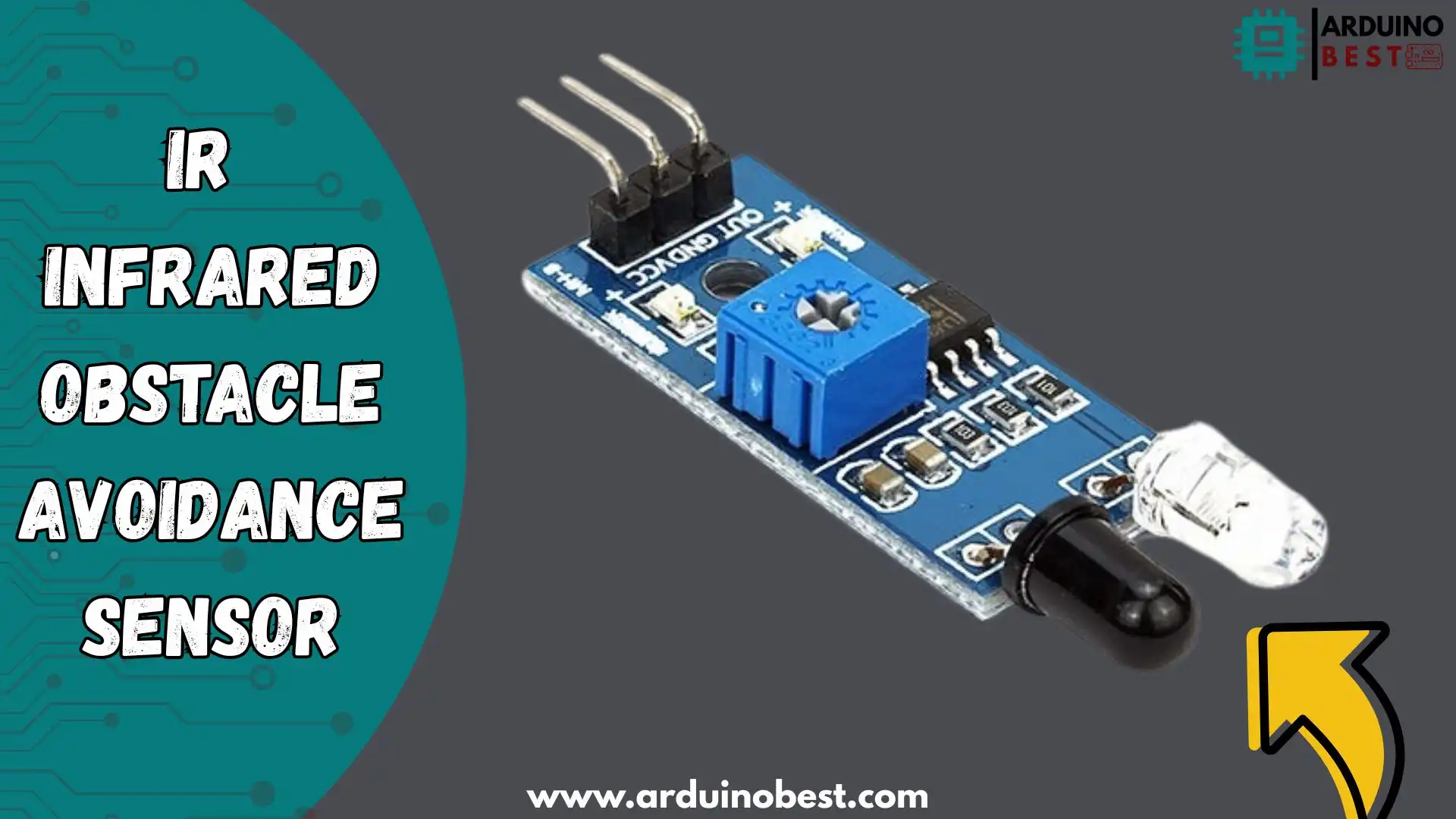Table of Contents
Introduction
In the realm of modern electronics and robotics, the ability to detect and avoid obstacles is crucial for the seamless operation of autonomous systems. Among various technologies employed for this purpose, Infrared (IR) Obstacle Avoidance Sensors stand out due to their simplicity, cost-effectiveness, and reliability. These sensors utilize infrared light to detect the presence of objects in their vicinity, making them indispensable in applications ranging from robotics to consumer electronics.
Fundamentals of Infrared (IR) Technology
Infrared light is a type of electromagnetic radiation with wavelengths longer than visible light but shorter than microwaves. This spectrum is typically divided into three regions:
- Near-infrared (NIR): Wavelengths from approximately 0.7 to 1.4 micrometers.
- Mid-infrared (MIR): Wavelengths from 1.4 to 3 micrometers.
- Far-infrared (FIR): Wavelengths from 3 to 1000 micrometers.
IR technology is widely utilized in various fields, including night vision devices, thermal imaging, communication systems, and, notably, in obstacle detection sensors.
What is an IR Infrared Obstacle Avoidance Sensor?
An IR Infrared Obstacle Avoidance Sensor is an electronic device designed to detect objects without physical contact by using infrared light. The primary components of these sensors include:
- IR Transmitter (IR LED): Emits infrared light.
- IR Receiver (Photodiode or Phototransistor): Detects the reflected IR light from nearby objects.SunFounder Documentation+1Blue PCB Electronics+1
- Potentiometer: Adjusts the sensitivity and detection range of the sensor.
These components work in unison to identify obstacles by analyzing the reflection of emitted IR light.
How IR Obstacle Avoidance Sensors Work
The operation of an IR Obstacle Avoidance Sensor involves several key steps:
- Emission of Infrared Light: The IR transmitter emits a continuous beam of infrared light.
- Reflection from Obstacles: When this IR light encounters an object, it reflects back towards the sensor.
- Detection by the Receiver: The IR receiver captures the reflected light.
- Signal Processing: The sensor processes the received signal to determine the presence and proximity of an obstacle.
The detection range can typically be adjusted between 2 to 30 cm using the potentiometer, allowing for flexibility based on application requirements. Elonics.org+5Sgbotic+5Dhaka Robotics+5
Circuit Design and Components
Designing a circuit for an IR Obstacle Avoidance Sensor involves integrating several components:
- Operational Amplifiers (e.g., LM358): Used for signal amplification and processing.
- Resistors and Potentiometers: Set the sensitivity and detection range.Electronics For You
- Indicator LEDs: Provide visual feedback when an obstacle is detected.SunFounder Documentation+1Electronics For You+1
Proper placement of these components ensures accurate detection and minimizes false positives. For instance, adjusting the potentiometer allows calibration of the sensor’s detection distance. ArduinoModulesInfo+2Sgbotic+2SunFounder Documentation+2
Types of IR Obstacle Avoidance Sensors
These sensors come in various configurations:
- Analog vs. Digital Sensors: Analog sensors provide a range of values corresponding to distance, while digital sensors offer binary feedback (obstacle detected or not).
- Single vs. Multiple Sensor Arrays: Single sensors are suitable for straightforward applications, whereas arrays are used for complex environments requiring detection in multiple directions.
An example is the KY-032 module, known for its adjustable detection range and compatibility with microcontrollers. ArduinoModulesInfo
Applications of IR Obstacle Avoidance Sensors
These sensors are integral to numerous applications:
- Robotics: Enable autonomous navigation by detecting and avoiding obstacles.
- Consumer Electronics: Utilized in touchless controls and proximity sensing devices.
- Industrial Automation: Employed in safety systems to prevent equipment collisions.
- Automotive: Assist in parking systems and collision avoidance mechanisms.
Their versatility makes them a preferred choice in various technological domains.
Integrating IR Sensors with Microcontrollers
Integrating these sensors with microcontrollers like Arduino involves:
- Wiring: Connecting the sensor’s output to the microcontroller’s input pins.
- Programming: Writing code to read sensor data and trigger appropriate responses.
- Calibration: Adjusting the sensor’s sensitivity to suit the specific application.
For a practical demonstration, refer to this tutorial on interfacing an IR sensor with Arduino:
Advantages and Limitations
Advantages:
- Cost-Effective: Affordable components make them accessible for various projects.
- Simplicity: Easy to integrate and use with minimal circuitry.
- Reliability: Provide consistent performance in controlled environments.
Limitations:
- Ambient Light Sensitivity: Performance can be affected by external light sources.
- Reflective Surface Dependency: Accuracy varies with the reflectivity of the obstacle’s surface.
- Limited Range: Effective detection is typically confined to short
Conclusion
In conclusion, IR Infrared Obstacle Avoidance Sensors are crucial components in the world of robotics, automation, and consumer electronics. Their simple yet effective design, which utilizes infrared light to detect obstacles, makes them an affordable and reliable solution for various applications. From autonomous robots navigating complex environments to parking assistance systems in cars, these sensors have proven their versatility and importance.
The key benefits of IR sensors lie in their low cost, ease of integration with microcontrollers like Arduino, and reliability in controlled environments. However, their performance can be impacted by factors like ambient light and the reflectivity of the obstacles they detect. Despite these limitations, their widespread use in everything from industrial systems to interactive installations highlights their value.
As technology continues to evolve, the role of IR Infrared Obstacle Avoidance Sensors will only become more significant. Their continuous improvement in terms of range, sensitivity, and adaptability to different environments ensures that they will remain a cornerstone in the development of autonomous systems. Whether you’re building a robot or designing an automation system, understanding and leveraging the capabilities of IR sensors is essential for success.
Arduino Projects:
1- Complete Guide for DHT11/DHT22 Humidity and Temperature Sensor With Arduino
2- DHT11 – Temperature and Humidity Sensor
3- DHT22 – Temperature and Humidity Sensor (more accurate than DHT11)
4- BMP180 – Barometric Pressure and Altitude Sensor
5- BMP280 – Barometric Pressure & Temperature Sensor
6- BME280 – Temperature, Humidity, and Pressure Sensor
7- Arduino Flex Sensor Controlled Robot Hand
8- Arduino ECG Heart Rate Monitor AD8232 Demo
9- Arduino NRF24L01 Wireless Joystick Robot Car
10- Arduino Force Sensor Anti-Theft Alarm System
11- Arduino NRF24L01 Transceiver Controlled Relay Light
12- Arduino Rotary Encoder Controlled LEDs: A Complete Guide

